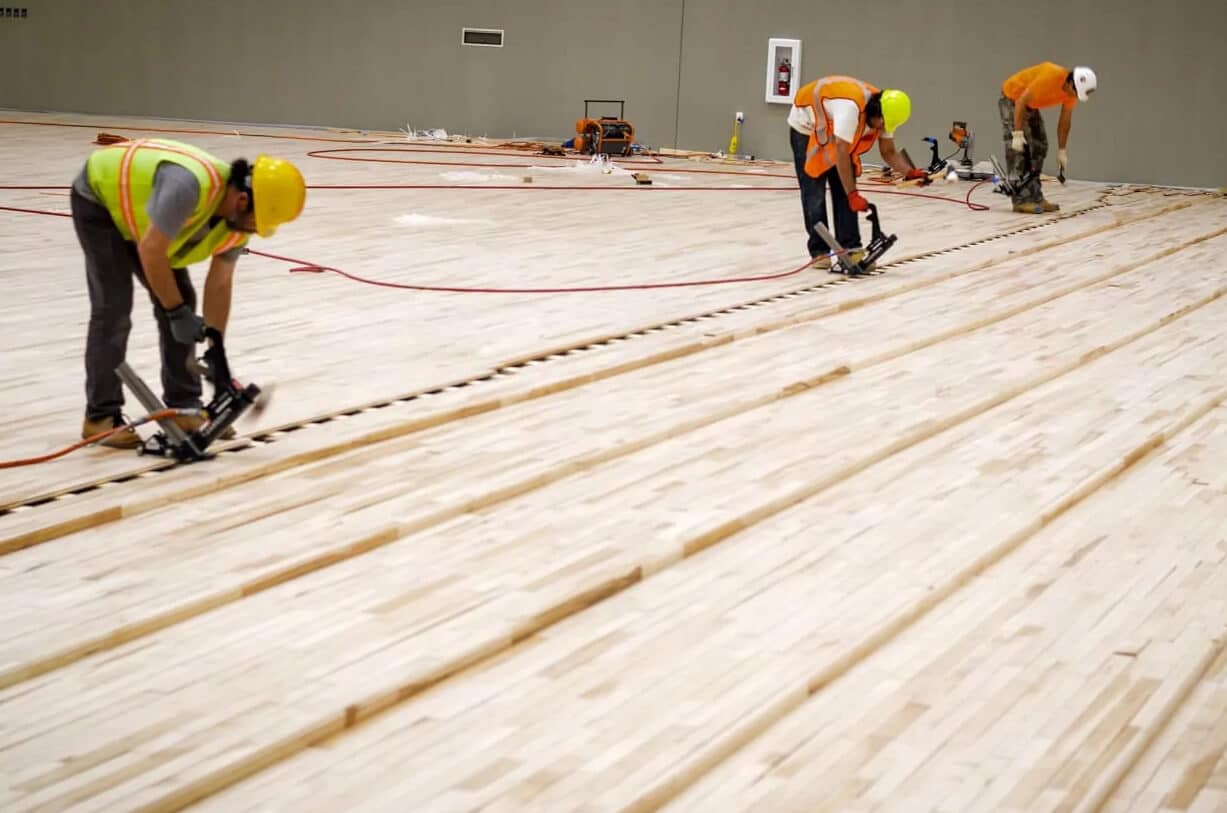Many people look forward to building their own basketball court at home, while most basketball court tiles are made from hard plastic, it is not correct to install them in any area without taking a few precautions first, including the subflooring you can use.
The subflooring is “what goes under” the basketball court tiles. It provides the whole area with stability and resistance so anyone can practice the sport safely without problems. It is different in indoor and outdoor applications.
We will explore the different types of subflooring for outdoor and indoor basketball courts and how each option benefits the players.
What is subflooring?
As mentioned, subflooring is the material that goes under basketball court tiles. Although it is barely noticeable, the truth is that it has an extremely important role in the sport.
Subflooring is made from different materials. It can be laminated veneer lumber or perhaps plywood. The right subflooring option is chosen depending on the athletic performance that the floor system will have throughout its life.

Plywood happens to be the standard subflooring material in indoor applications due to its durability and stability.
Generally speaking, the standard material for subflooring in outdoor applications is concrete, although there are other options, like asphalt. As long as the surface is stable, even, and optimized for water drainage, it is optimal for sports use.
Why is subflooring important?
The subfloor provides additional capabilities to the regular floor, including improved shock resistance and uniformity. All these characteristics make it possible to fulfill athletic performance needs.
When it comes to collegiate athletics, the main function of subflooring is to provide as much shock absorption as possible. Consequently, this contributes to the reduction of athlete injuries and minimizes the impact and stress the athlete’s joints and muscles receive during practice.
However, on basketball floors, subflooring becomes even more important. Basketball courts are designed to provide the ideal ball bounce or rebound. Ball bounce refers to how the ball responds whenever it impacts a surface.
This said we could conclude by saying that subflooring is an essential part of any sports flooring system that should not be ignored. It can provide specific features for athletes to maintain a balanced performance during the place.
Can any material be used as subflooring?
Not necessarily. The material depends on the athletic performance needed, which is why it needs to be planned thoroughly. As mentioned, it also depends on whether it will be an outdoor or indoor space.
While outdoor spaces are relatively easier to plan, each area has its own set of challenges that must be analyzed during the project.
Indoor basketball courts may have diverse types of subflooring depending on the performance needs.
Other common options besides the ones mentioned above include dimensional lumber and strand sheathing. Still, plywood is the most popular option due to the stability and durability it provides to the whole area.
The subflooring will have an impact on the overall activity that will be performed in the area. Designing the flooring of a basketball court (or any other sport, actually) can be complicated as each athlete has different strengths and weaknesses.
The basketball court should allow the athlete to have the best performance possible by contributing to their resistance and comfort.
It can take a long while to decide the type of subflooring that will be used in a determined space.
However, once it has been selected, the installation of the basketball court flooring will be easier to manage as the expectations would be already settled.
Conclusion
If you have ever wondered what goes under basketball court tiles, the answer to that question is that “it depends” on different factors. The longer answer reveals another layer on the flooring, known as “subflooring.” It improves the shock resistance and other factors from the basketball court, allowing the athletes to perform as best as possible and continue improving their abilities.
The type of flooring in any sports court is extremely important, which is why it must be planned thoroughly.
In basketball, it affects athletic performance and ball bounce, among many other factors. Therefore, different materials will have a different effect on the overall course of the game or practice.

